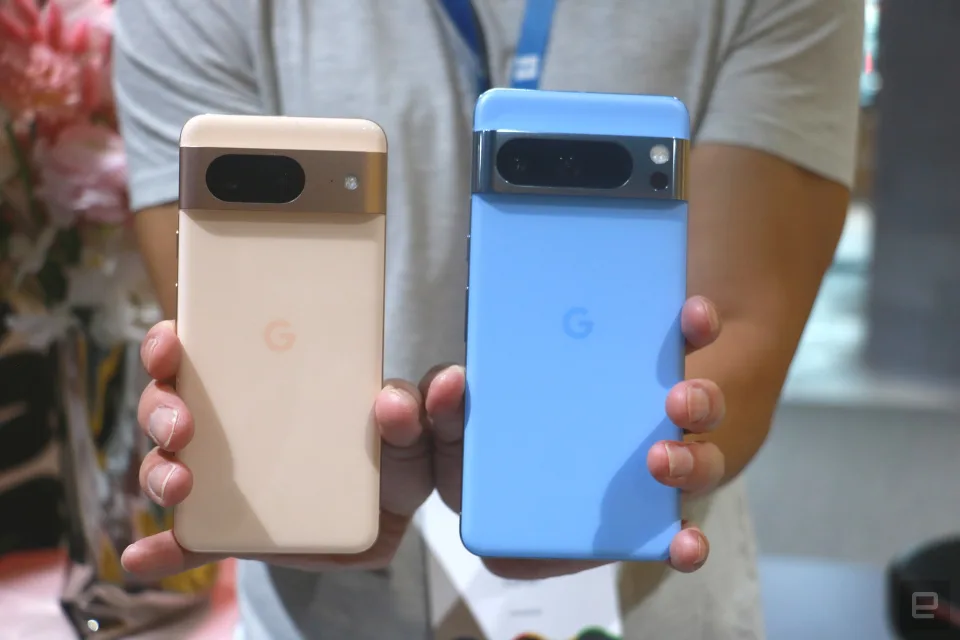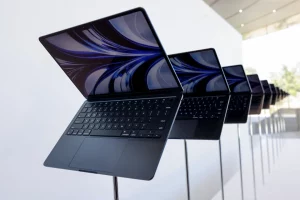After building anticipation with teaser trailers showcasing the Pixel 8 series, Google has finally unveiled the full details of its latest flagship smartphones. The Pixel 8 and Pixel 8 Pro were introduced during the Made by Google event, and they bear a striking resemblance to their predecessors, with a few notable distinctions. The regular Pixel 8 is slightly more compact, enhancing one-handed usability. In contrast, the Pro model boasts a new matte finish, upgraded cameras, and a fascinating temperature sensor.
Both the Pixel 8 and Pixel 8 Pro feature Google’s Tensor G3 processor, enhancements to the Assistant, and most notably, a commitment to providing seven years of Android and security updates. This extended support means that you may be able to keep your Pixel flagship for a considerably longer duration. Now, the question remains whether the Pixel 8 and Pixel 8 Pro offer enough to entice users to keep them in their possession for years to come.
It’s important to mention upfront that, despite its reduced size, the standard Pixel 8 starts at $699, which is $100 more than its predecessor. This pricing may seem counterintuitive, but the smaller display now boasts a refresh rate of up to 120Hz, an improvement from the 90Hz of the previous model. Meanwhile, the Pixel 8 Pro is priced at $999, marking another $100 increase over the Pixel 7 Pro. Google and most carriers are offering a range of pre-order incentives to make the deal more enticing.
A potentially useful temperature sensor
Among all the upcoming changes to Google’s flagship devices, the introduction of a new temperature sensor on the Pixel 8 Pro piques my curiosity the most. I understand it might appear gimmicky, and in my daily life, I rarely find the need for a thermometer. However, in the realm of smartphones, which often feels stagnant and uninspired, this is a unique addition, indicating that Google is willing to explore new avenues.
The temperature sensor is positioned beneath the flash in the camera bar of the Pixel 8 Pro (it’s worth noting that the standard Pixel 8 does not have this feature). To take a temperature reading, you’ll need to open the new Temperature app and specify the type of object you want to measure. You can select from options like “food and organic,” “cast iron,” “plastic and rubber,” “fabric,” and more.
Currently, Google is awaiting FDA approval to enable the Pixel 8 Pro to measure body temperature. However, there’s nothing preventing you from choosing the generic “default” option and aiming the infrared sensor at your forehead. Keep in mind that this is not its intended use, and the reading may not be entirely accurate.
With the current app and algorithms, you can check the temperature of bathwater before placing your child in it or ensure your cast iron pan is sufficiently hot before searing your steak. There are various practical applications for the sensor, but most of us have managed without carrying a thermometer everywhere, so it remains to be seen whether this feature will become an integral part of our daily lives or follow the path of the Soli radar, introduced with the Pixel 4 and retired with the Pixel 5.

Nevertheless, based on my initial attempts to use the Pixel 8 Pro for scanning objects, the system seems to function effectively. I positioned the sensor within an inch or two of iced water and warm coffee, staying within the recommended range of 5 centimeters or 2 inches for optimal results (a Google representative advised against using the sensor on anything emitting steam). The measurements appeared on the app in mere seconds, and the results appeared to be accurate. The temperature readings for the coffee, which had been sitting out for some time, consistently hovered around 97.2 degrees Fahrenheit during multiple attempts, while the iced water measured 37.4 degrees Fahrenheit. To fully assess its practicality and potential impact on battery performance, I will need more time with a review unit in real-world scenarios.
The Assistant gets better with generative AI
The temperature sensor might find utility in certain situations, but the primary focus of the Pixel 8 series updates centers around the Assistant. With generative AI gaining popularity this year, it’s no surprise that Google is incorporating these capabilities into its phones. On the Pixel 8 devices, you’ll have the ability to ask the Assistant to summarize, read aloud, and translate articles and web pages. I conducted a test by opening my hands-on review of the iPhone 15 Pro Max on Engadget.com, long-pressed the power button to activate the Assistant, and requested it to “Summarize this page.”
The Assistant responded with, “The author reviews the iPhone 15 Pro Max, which has a new zoom lens and a new Action button.” It went on to provide two additional bullet points, summarizing that my article mentioned the programmable nature of the Action button and described the device as having a titanium body and a FineWoven case meant to replace leather.
While some language adjustments might be needed, the Assistant generally did a commendable job summarizing my article. At the bottom of the summary, Google solicits feedback and offers follow-up actions through buttons like “About iPhones” and “Who invented the iPhone,” which may be familiar to those who have interacted with chatbots like Bard or Bing AI.
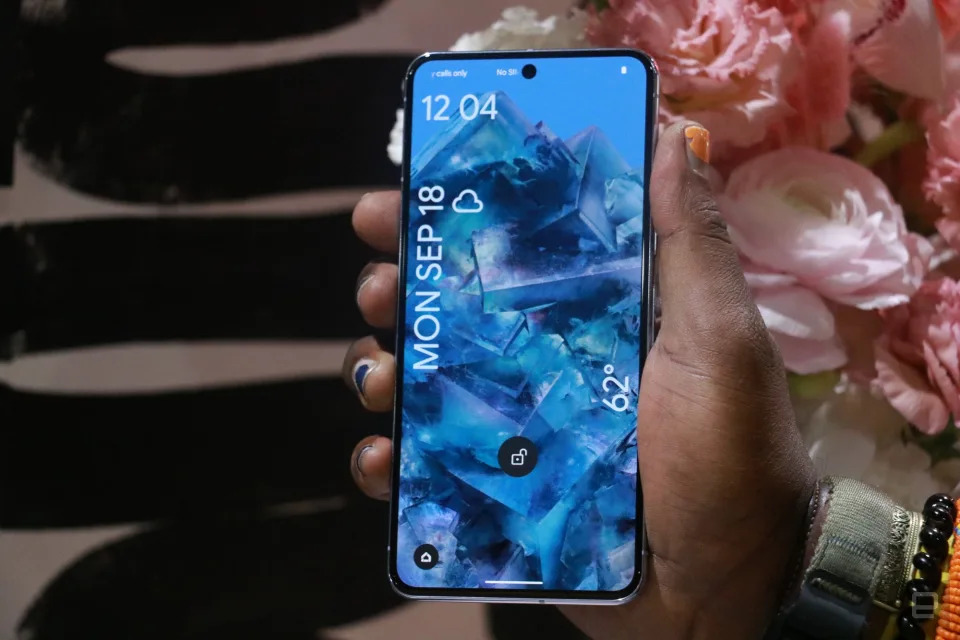
Interestingly, I didn’t need to use voice commands to request a breakdown of my article. When activating the Assistant, it provides suggested actions like “Summarize,” “Read aloud,” “Translate,” and “Search screen.” If you want to stay focused on your surroundings, or if you’re short on time to read an entire review, the new read aloud feature can be incredibly useful. I particularly appreciate that when instructing the Assistant to read something, a playback control box appears, allowing adjustments to playback speed, skipping forward or backward by 10 seconds, and providing a draggable progress bar.
Located at the bottom right of the playback box is a translate icon. You can not only ask the Assistant to translate articles from foreign languages into one you understand but also have it read aloud in a supported language. I requested my review to be translated and read aloud in Mandarin, and the Pixel 8 Pro accomplished this accurately and almost instantly.
One of the standout features on Pixel phones is Call Screening, which allows you to tap into the Assistant to identify incoming callers and their purposes for calling. With updates coming to the Pixel 8 series, the artificial voice will sound more natural, incorporating pauses and nonverbal expressions to appear more human. We saw early examples of this when Google introduced Duplex, and while many of us had concerns about the implications of AI sounding extremely human, there are potential benefits here. Most notably, callers are less likely to hang up if they believe they are speaking with a real person, and you’ll find it easier to ask them questions without answering the phone yourself.
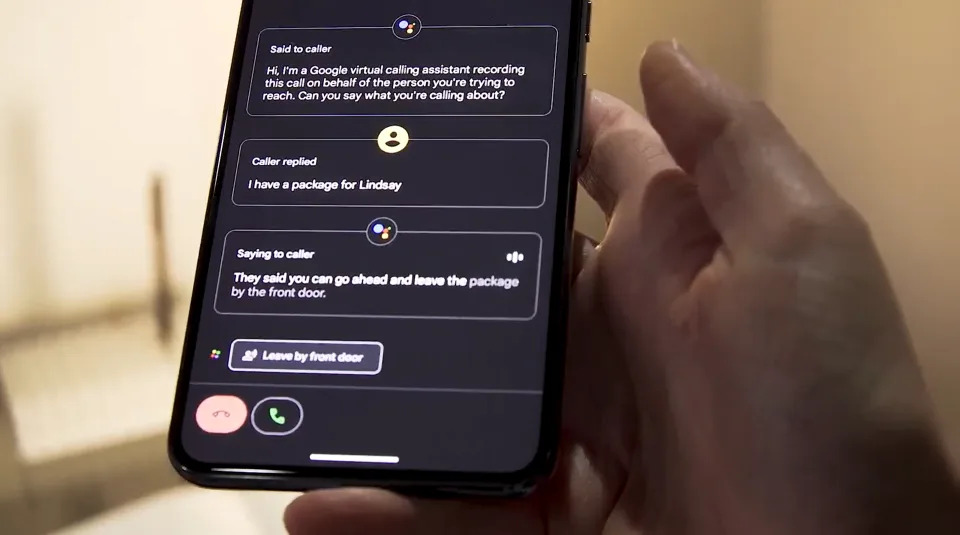
Additionally, the Assistant can recognize if someone is calling regarding a package and will suggest follow-up actions like “Leave by front door” or “I’ll be right there.” During a rehearsed demo with Google’s executives, this feature worked seamlessly. However, when I attempted it later by pretending to be a delivery person seeking a signature, the Assistant did not provide a relevant prompt. It’s possible that Google will continue to refine this feature over time. Frankly, Google’s Call Screening remains more flexible and interactive compared to Apple’s Live Voicemail, recently introduced in iOS 17, making it more helpful overall.
Another Pixel-exclusive tool I appreciate is the Recorder app, and soon it will offer summaries of your transcripts. If you frequently use Recorder for numerous meetings and interviews, this feature may help you quickly identify the conversations you’re interested in. Based on the demo I observed, the summaries are not highly detailed but provide very basic bullet points. Journalists like myself may still need to spend time selecting notable quotes.
The Assistant is also expected to become more adept at understanding your speech, even if you stumble or use filler words like “uhm” or “er” while conversing with it. In my brief experience with this feature so far, the Assistant did manage to comprehend me despite occasional pauses and filler words. However, I’m not sure if I would ever unlearn the habit of speaking very precisely to the Assistant.

Cameras
I’ve always considered Pixel phones to have the best smartphone cameras. However, with companies like Apple and Samsung making significant advancements in their flagship cameras, Google’s lead has been narrowing. Google used to rely heavily on its software capabilities to compensate for hardware limitations, especially in its shift to multi-sensor camera setups. In recent iterations, Google has adopted a more balanced approach, improving its camera hardware while continuing to enhance its image processing algorithms for clarity and color.
The Pixel 8 series follows this dual-strategy approach. The Pixel 8 Pro, for instance, features a sharper 48-megapixel ultrawide camera, and the telephoto system’s 48MP sensor now uses a lens with a better f/2.8 aperture and a slightly wider field of view compared to the previous model. Its primary camera remains a 50MP setup but now boasts a lens with “2X optical quality” at f/1.68, an improvement over the previous f/1.85 glass. Meanwhile, the main camera on the standard Pixel 8 is identical to that of the 8 Pro, which is a step up from the Pixel 7. Its other rear sensor is also nearly the same as the previous generation.
While the hardware upgrades are relatively minor, the significant changes are found in the software. Google has redesigned its camera app to provide easier access to manual controls. The new layout includes two buttons at the bottom for switching between photo and video capture, offering better organization, especially with various modes like Action for adding motion blur to photos.
This redesign also introduces a Pro mode, granting users manual control over settings like brightness, shadows, and white balance, as well as the ability to capture stills at the full 50-megapixel resolution. To activate Manual mode, users need to access the settings, and enabling it will deactivate the auto lens switching feature.

I stumbled upon this discovery while using the Pixel 8 Pro to capture an extremely close-up shot of a flower in the demo space. I was particularly interested in testing the improved Macro focus. However, I had inadvertently activated Manual mode, preventing the lens from automatically adjusting as I got closer to the petals. Thanks to its sharper ultrawide sensor, the Pixel 8 Pro can achieve remarkable proximity to subjects while maintaining focus. This year’s Pro model can work at distances as close as 2 centimeters, while the standard Pixel 8 now supports macro photography for the first time, with the same capability as the Pixel 7 Pro, allowing it to focus as close as 3 centimeters.
Although I didn’t measure the exact distance between the camera and the flowers I was photographing, I was genuinely impressed with the level of detail captured by the Pixel 8 and Pixel 8 Pro. To determine if it surpasses the competition, it would require real-world comparisons against Apple’s and Samsung’s offerings. However, based on my hands-on experience, it appeared to be effective and speedy.
I also had the chance to explore the Pixel 8 Pro’s 5x telephoto system by zooming in on items at a breakfast buffet about 15 feet away. To my surprise, I could read the words on the cards identifying the types of milk available. While I cannot definitively say how it compares to Samsung’s Space Zoom or the iPhone 15 Pro Max, it showed promise.
Some of the most significant camera improvements in the Pixel 8 series are related to video recording and processing. One noteworthy addition is “Video Boost,” which uploads your clips to the cloud for enhancement using Google’s powerful processors. Enhancements include applying HDR+, enhanced color grading, and, for the first time, Night Sight Video. In a sample video Google demonstrated, a scene with someone kicking a ball into a net in the dark became significantly brighter after Video Boost, revealing the presence of a second person in the shot.
However, I am somewhat skeptical about this feature because it involves sending a file to Google’s servers, and the duration for processing is unclear. The company mentioned that it could take a few hours or longer, depending on the video’s length. Additionally, Video Boost is expected to arrive later this year and won’t be available at the initial launch, so it will be some time before we can assess it firsthand.

However, what truly piqued my interest is what Google refers to as “Audio Magic Eraser.” Just as the Magic Eraser can remove unwanted elements from images, this innovative tool can diminish background noise in your videos. During a demonstration, I watched a sample video featuring a street performer playing an instrument while a blaring siren passed by, overwhelming the music. After applying the Audio Magic Eraser, the sound of the passing vehicle was noticeably reduced. While it wasn’t completely eliminated, it became significantly less distracting.
Numerous other features are making their way to the Pixel 8 series. These include an enhanced “Best Take” function, which allows you to select your preferred shot of each person in a group photo. Additionally, the Magic Editor, which was unveiled at Google I/O earlier this year, will be available when the new flagships launch. On the camera front, the Pixel 8 Pro’s 10.5MP selfie camera is gaining autofocus, while the standard Pixel 8 also features a 10.5MP selfie sensor but with fixed focus.
Moving beyond cameras, Assistant, and the temperature sensor, there are several noteworthy updates across the Pixel 8 series. Face Unlock, for instance, now meets Google’s stringent internal security standards, making it suitable for tasks like authenticating mobile payments or logging into apps. This expanded functionality is made possible by the Tensor G3 chip found in both phones, which also powers features such as the Audio Magic Eraser and enhanced spam call filtering. While specific details about Tensor G3 remain limited at the moment, it promises to bring further enhancements to the Pixel experience.
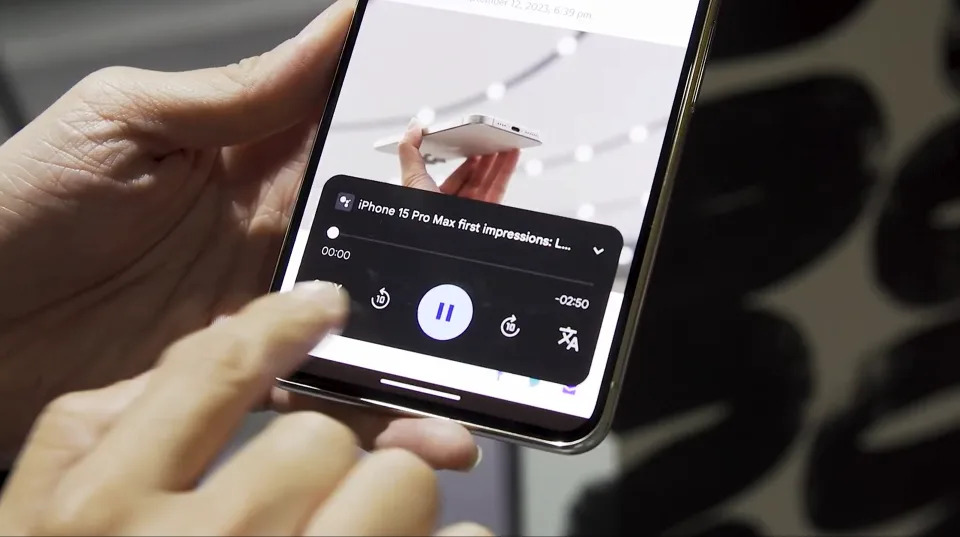
Google is also introducing new display names for the Pixels – Actua for the smaller handset and Super Actua for the Pro model. Think of this as Google’s equivalent of Apple’s Retina and Super Retina displays. In practice, these names don’t signify much beyond Google’s use of its own software and processing to deliver brighter and sharper visuals.
In the current landscape of smartphone displays, it has become increasingly challenging for the average person to distinguish between a Super Retina and a Super Actua display, provided they are viewing the same content at the same brightness level. It’s worth noting that the Pixel 8 features a 6.2-inch screen with a 120Hz refresh rate, while the Pixel 8 Pro maintains the same 6.7-inch size with a slightly wider 20:9 aspect ratio (compared to last year’s 19.5:9). Additionally, the Pro models now sport a matte finish and come in colors like Bay (pastel blue), Porcelain (white), and Obsidian (black), while the smaller handset is offered in Rose (light peach) along with the black and white options.
As for aspects like battery life, performance, device grip, and heat management, a comprehensive evaluation will require real-world testing of the Pixel 8 and Pixel 8 Pro. Stay tuned for our forthcoming full review, where we will provide detailed insights into these aspects.

